sideblog for actual "content": pics & video of my pet rats, readings & discussion of divination, witchcraft, paganism, my experiences, etc. - my main is mostly reblogs: alyssumflowers - icon art & header picture are both my own
Don't wanna be here? Send us removal request.
Text

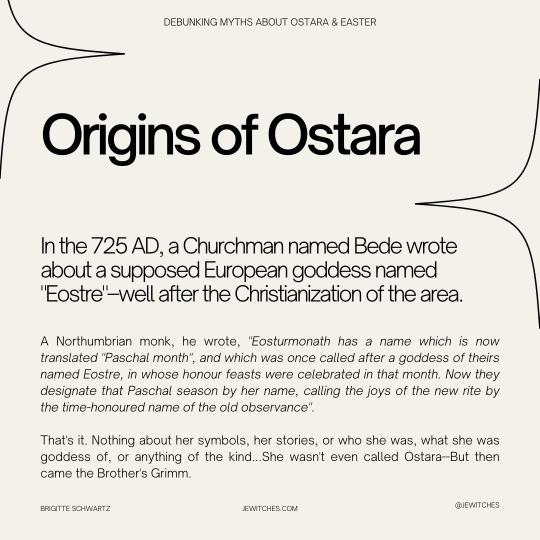
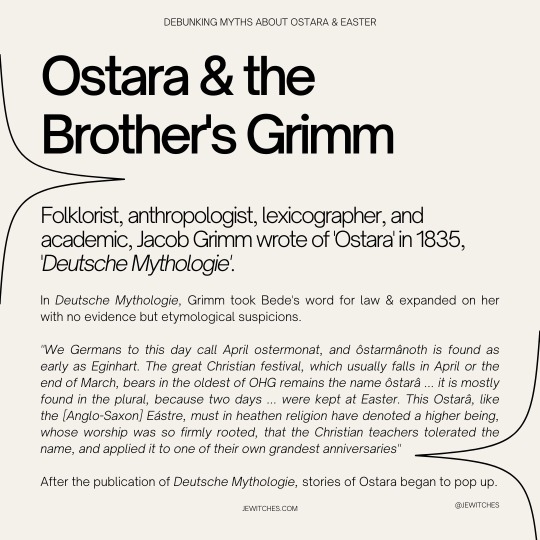


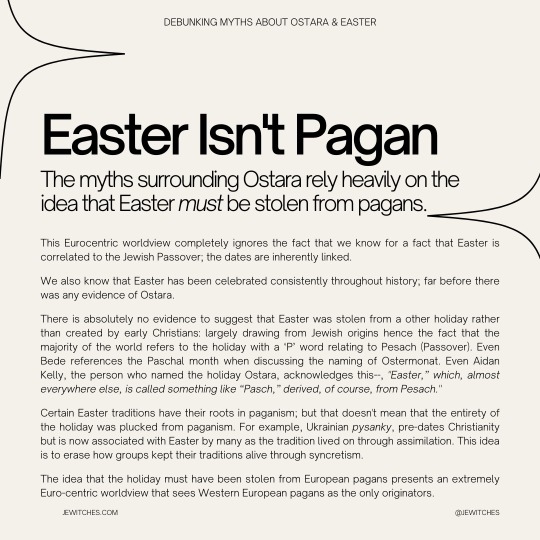
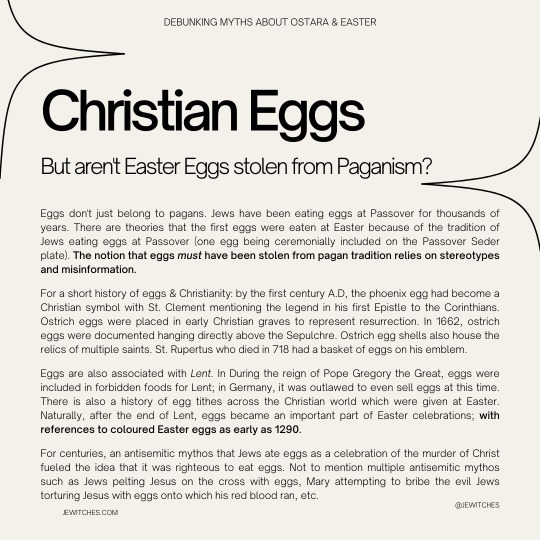
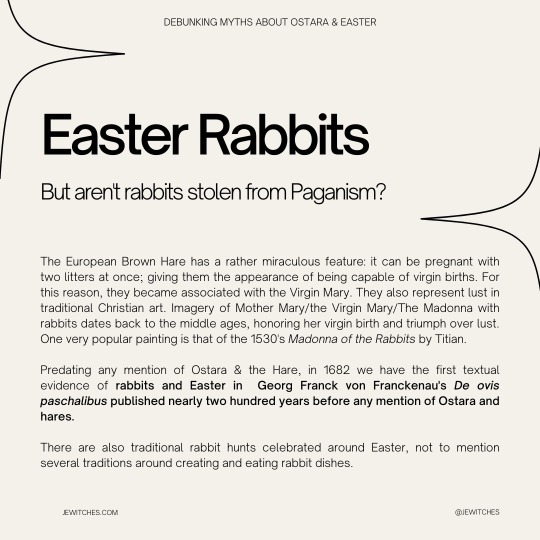

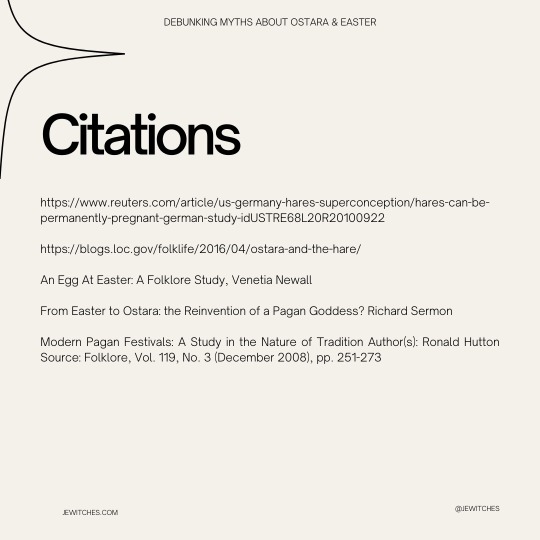
Every single year, without fail, we deal with the fact that the internet is obsessed with promoting the misinformation that Ostara must have been stolen from Easter.
People will argue until they’re blue in the face…But they won’t provide citations or evidence to the contrary and the reason why is simple: there isn’t any.
If you find that celebrating Ostara brings you joy: we aren’t here to rain on your parade or stop you in the slightest.
But misinformation, even misinformation that sounds cool and serves to further rhetorical goals, is still wrong and harmful.
So, after years of promising it, we’ve finally delivered: Easter isn’t stolen from Ostara.
Have questions? We’re happy to answer!
Make sure to follow our Instagram @jewitches for the ongoing discussion!
6K notes
·
View notes
Note
could you please point me to your post about how americans misuse greek mythology (if it isn't too much trouble, of course)? while i'm not american i would be interested in reading about it since i think it is always a relevant topic
Ah, sure, no trouble! The thing is, I have several posts on this matter. Time to make a masterpost. Some disclaimers first:
1) The blogs I reblog from, I don’t agree in everything with them. I also can’t look up every blog I’ve ever reblogged from. 2) Greeks are not mad at Americans for not knowing. (You can’t expect someone to automatically know things for other countries so far away from them). The problem is most Americans don’t research or even realize that they have to research, since they are absorbed in their own country’s affairs only. Probably because of their country’s power and self-reliance, some Americans have a hard time comprehending in depth how other cultures differ from theirs. 3) This also goes for countries who have been and are big powers. It’s mostly the UK, Germany, Austria, France, Australia and Canada (perhaps). There is a certain amount of privilege these countries have and they can more easily forget to check if the information they are served from the media or their friends about Greek mythology is correct.
On this attitude there is a small commentary in this Post
The recent Nike stupidity: Post (I forgot to reblog the addition so I’m sending you to another blog)
"If you see “Greek mythology” and your mind goes to North Americans and Northwestern Europeans, you haven’t decolonized your mind yet." Post
How Americans (among other foreigners) miss the mark with Hades and Persephone myth. Post
False stereotypes for Greeks and Greece most Americans have: Post
Dispelling the myth that ancient Greek folklore is a patriarchal creation. (Greece was and is patriarchal, but the creation of folklore doesn’t fall onto men only. Dismissing the whole ancient and modern folklore as “fanfiction written by dudes” is quite dismissive and condescending) Post
Foreigners not knowing we had a word for blue! Post
Some (mostly Anglophone) Hellenic pagans use "Hellen"/"Hellene" as their identity name, while that name denotes a nationality. Also, some Hellenic Pagans identify as "Hellenic" which sounds as if they identify as Greek people. (It is like me saying “I am British”. It's a linguistic matter. The problem is that they don't know it and that this knowledge isn't available to them). They also falsely use the word "Hellenismos" as a name for their religion. Meanwhile, "Hellenismos" always meant "Greek people and culture". (Another linguistic knowledge not available. And nobody cares to ask Greeks about it) Post
Sarah J. Maas passing existing names and cultures as her own Post (In her more recent books she has more Greek words but she says they are part of an “ancient forgotten language”)
In the book Receiver of Many (from a US American author) there were many weird things, including Persephone not knowing what her name meant. (reminder: she speaks the language her name is from :p) There were so many inaccuracies I had made a whole post about it but I got tired and deleted it, together with my memories of it :p
In the book Circe the hero Odysseus and his crew become rapists to further develop Circe’s story. This invalidates both Circe and the beloved hero of the Greeks for millennia. (Odysseus wasn’t a saint but making him a rapist is not respectful either). The author, Madeline Miller also said in an article that she continues (!!!) the Greek mythology and the article compared her to Homer. Madeline Miller is a US American with a BA and MA in Latin and Ancient Greek, and has been teaching both for almost a decade. If a person with such knowledge is doing this, it makes me feel that we really have no hope with the rest.
Rick Riordan being culturally inclusive but surprisingly NOT inclusive to Greeks, in a series talking about Greek mythology. I don’t recall dances, food, customs and relatable things in the Percy Jackson series. What is more, some portrayals of the gods are questionable. And Apollo’s surname is Christian Orthodox and means “Priest’s Child”. Which is weird and shows that the amount of research on his surname lasted less than ten seconds. This Post shows how it would be to have some Hellenismos (Greekness) in the Percy Jackson series.
Lore Olympus, holy f*ck, where do I begin.... (The author is from New Zealand where you can find Greek people and communities, and is also very active on social media where she could have found Greeks and ask them)
A British author misusing Greek language and mythology in To Kill a Kingdom: Post
Americans drawing Greek deities without any Greek elements on them: Post (OP’s blog has changed, so the post remains just as an example) Another Post comments on this trend.
And last but not least, all the hate Zeus (the literal father of gods!!) gets on this most US American site shows zero seconds of research on Greek mythology.
755 notes
·
View notes
Text
Dead Man's Dust

Intent: For preventing spirits from following you home.
Ingredients:
1 pt Chili Pepper (any type)
1 pt Salt
1 pt Basil
1 pt Garlic Powder
1⁄2 pt Dill
1⁄2 pt Lemon Peel
Optional: Add a pinch of Curry or Cumin for extra oomph.
Note: Powdered versions of most herbs are available online. I recommend Starwest Botanicals and Penn Herbs for quality products at reasonable prices. Also, if you can get your hands on a good electric spice grinder, you can make your own powder from dried herb products. If you don't have premade powdered herbs, grind each ingredient separately to produce fine powder. Sieve the material through the mesh strainer into the collection dish; this removes the larger unground pieces and gives you cleaner powdered herb. (Pro-Tip: Putting a funnel under the mesh strainer reduces lost material and makes collection much easier.)
Combine the component powders in the collection dish, mix well, and bottle immediately. Label with the name, date, and ingredients for future reference.
This powder performs one of the functions of Banishing Powder, but with special attention to warding off pesky ghosts. After visiting historical or haunted locations, or any time you feel spooked while walking home, sprinkle a palmful of powder on the ground and scrape your feet on it (as if you were wiping off dirt) to keep anything ghostly from following you home. Take three steps backward and spit toward the powder, then continue on your way.
For extra protection, toss a pinch of Banishing Powder, Threshold Powder, or Black Salt over your doorstep when you get home.
Note: For safety's sake, make sure you never cast this powder into the wind and wash your hands after use. Leftover particles on your skin can cause pain and irritation if they come into contact with your eyes or breathing passages.
-adapted from Pestlework: A Book of Magical Powders & Oils, (c) 2017 by Bree NicGarran
(If you’re enjoying my content, please feel free to drop a little something in the tip jar or check out my published works on Amazon or in the Willow Wings Witch Shop. 😊)
781 notes
·
View notes
Note
Loki and Sigyn: Lessons on Chaos, Laughter & Loyalty from the Norse Gods by Lea Svendsen
https://www.amazon.com/dp/0738769312
I love that book. She does get a little repetitive trying to advocate for Loki and for Sigyn and there's a lot that's a little more focused on the Trickster, but there's still plenty of love for Sigyn including (off the top of my head) at least one ritual that's specifically all about Her.
Hi! So, I've been a devotee of Loki for about four years now, and recently, I've wanted to bring Sigyn into my practice. I have a free resources on her, but I was wondering if you have anything good on her that doesn't simply refer to her as "just Loki's wife". Both historical things or resources from those who do work/worship? If not, it's perfectly okay, I'm looking for some more on my own!
Unfortunately, there isn't much I can recommend, beyond following people who work with Sigyn. The oral tradition's always a good resource; to anyone reading this, you're welcome to add anecdotes or offer resources on Sigyn if you have any.
But when it comes down to any actual lore about Sigyn, there isn't much. The only tidbits we have are the ones you're already familiar with: Sigyn's the wife of Loki, with whom she had one or two sons depending on the source (Narfi and Vali), and when Loki was bound beneath the Earth for killing Baldr, she held a bowl above his head to catch the snake-venom that would otherwise drip upon him.
There's Sigyn devotionals out there, but I'm not familiar enough with them to recommend them.
I actually had this same exact problem a few years ago. I'd been mucking around with Loki for a few years and figured it was time to meet his wife. The problem was, I couldn't find anything about Sigyn that wasn't just playing off what little we know of her from the myths.
Eventually I decided to set out an offering and evoke her myself to see what would happen. She actually did drop by and I did learn a lot from her this way.
I recommend trying this if you have the time. It's very rewarding.
39 notes
·
View notes
Note
I've also seen plenty of Christian witches. Catholic mass is a magic ritual. But also like, I was reading Southern Cunning which has a whole section on Bible magic, especially using Psalms for spells.
currently debating how witchy i can get with it while still being a follower of our lord and savior jesus christ (no i'm not trying to shove it down anyone's throat please nobody harass me or attack me i've had enough of that for a lifetime) but yeah you got any advice idk i'm sorta new at this and currently exploring a very strong connection i have with the moon
I want you to understand that some of the greatest occultists in history were Catholic priests doing ahit that was absolutely, unequivocally, 1000% banned by the church. You can do whatever you want forever.
683 notes
·
View notes
Text
The person who re-blogged this wants you to know that they are open to questions regarding their spiritual path, witchcraft and faith, and in fact, would love to talk about their spiritual path with you and have a casual talk!!
(this applies to me pspspsps HMU , don't hesitate, i am always open to respectful discussion of our spiritual paths and just being friends!!)
984 notes
·
View notes
Text

still had power up until like 8-10pm ish when the rain slowed down and Francine had supposedly passed
and yet

woke up in the middle of the night just now (like 1-2am ish) because i was getting warm since the a/c is off
so idk exactly when we lost the power but it can't have been long.
looked around outside using my phone as a flashlight and honestly? a couple of cushions off the outdoor couch got knocked around. didn't even lose them. that's it.
I didn't see anything in the street like knocked over trees or power lines or anything so like, no idea why the power is out or when it's gunna get turned back on.
we'll see if I can get back to sleep without the a/c.
we have a generator but I'm pretty sure the others are asleep and idk where the generator is or how to operate it or anything so 🤷
0 notes
Text
so they said they were gunna take away the trailer so we hauled ass getting everything out even though the house wasn't done and...
the fucking thing is still there.
no idea when it's going to be gone, ugh.
and I'm living on the couch in the living room while they put up drywall, which means putting away everything every morning until they're done.
they were supposed to come today to finish but I guess not?
anyway, here's my "room" right now:

so along with everything the fuck else, that's what my life is like.
Looks like hurricane Francine is moving real fast and won't get to more than a cat 2 so I think we'll be fine. we're on the same block as the police and fire stations so even if our power goes out, we'll be the first to get it back on plus we've got a generator.
got pulled twice now to head down to the church on the corner of the crossroads, so I brought Mary some flowers this time. I didn't bring the flowers to ask for anything, but as I was talking to Her, I did point out this is Her church and Her neighborhood and I'd appreciate it if she protected us, though the flowers were hers regardless because she deserved them whether she helped or not. I bet Our Lady of Prompt Succor is why that hurricane is moving so fast because I found about about it picking up speed after I prayed so.
anyway, if you're along the Gulf Coast, be safe. If not, pray for us or send good vibes or whatever y'all wanna do. 🙏💝
#personal real life shit#our lady of prompt succor#hurricane francine 🌀#adhd witch#new orleans witch#folk magic
0 notes
Text
It's very regionally based. Some forms of Shintoism are closed and others aren't, depending on lineage, etc. You're just going to have to do lots and lots of research on the culture, history, background, etc and talk one-on-one to as many Japanese practitioners as you can.
guys i have a question about if shinto is a closed practice? google says everyone can worship kami even if you're white or non japanese but idk so maybe someone here knows something?
8 notes
·
View notes
Text
THE GODS ARE NOT ANGRY AT YOU!!! YOU ARE ALLOWED TO FUMBLE! IT TAKES WAY MORE THAN SPILLED OILS OR ACCIDENTALLY EATEN OFFERINGS TO ANGER THEM!!
Bless y'all <3
1K notes
·
View notes
Text
I feel like a fucking poser
Please can some norse pagans come forward and give me tips on how to build relationships and do offerings and just. Help me not fucking be a poser please. I dont know if im doing this right because i see so many people make altars and give big offerings and. I just cant do any of that because my family is all russian orthodox and very pushy about christ
I tried talking to Odin for two days in a row and He made me cry both times. The second day was more violent than the first
I tried talking to Hel and i guess She listened and let me know through flame flickers that She was listening and that She accepted me
But i dont know if i was just seeing and understanding things wrong and just doing it all wrong
I need help. Please
244 notes
·
View notes
Text
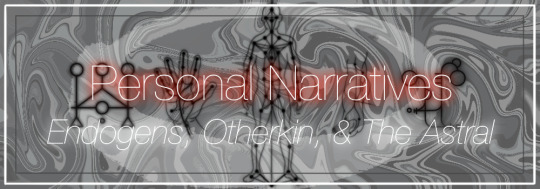
Content warning:
This article contains information that some within the community will feel targeted by. This article will also contain subjects such as: suicide, cults, gaslighting, godphoning, sexual grooming & abuse, and trauma bonding.
What is a personal narrative?
A personal narrative is a story that someone tells themselves in order to make themselves feel happy, important, powerful, hated, or even loved. These narratives are occasionally linked to psychosis and mental illnesses. Personal narratives often exist to help a person feel like the “main character” in their own lives and gives them a sense of purpose and an escape from their realities.
How can personal narratives affect witchcraft?
Personal narratives and UPG can form a venn diagram, in the center of which lies some of the most toxic of our community. Personal narratives can become an individual’s excuse for appropriating from closed cultures, or for starting a cult. I, personally, have met several individuals who thought they were practicing magic, when in fact they were roleplaying within their own personal narratives and trying to pull other practitioners into it. This can happen through a variety of ways but most often through trauma bonding or shared "past lives".
Personal narratives surrounding the astral plane
After much discussion with other practitioners, I have come to the conclusion that there are a lot of practitioners whose experiences in the astral plane are pure personal narrative. In my experience, as well as several other practitioners whose perspectives I’ve come to trust, the astral plane does not contain much form and is not inhabited by many spirits. It is more of a transitional space. It is similar to the dreamplane, however all constructs must be formed consciously. Any spirits you may come across are likely there as they migrate from one location or spatial dimension to another. I’ve met several people who’ve claimed to be advanced in astral projection, only for them to spin their personal narratives around others in order to have another person to interact with in their astral narrative. There are words to describe this process: cognitive and confirmation bias.
Personal narratives surrounding Otherkin
Most otherkin are well within their spiritual practices and do not necessarily spin or reside within a personal narrative. However, the otherkin community is a hotbed of manipulative and cult-like phenomena that centers around some personal narratives. Specifically those who claim to be incarnations of spirits or deities. These individuals tend to try to pull others into their narratives in order to have a sense of power over others, and if threatened will build their sense of power by trying to threaten or scare those they are trying to manipulate.
Personal narratives surrounding endogenic systems
Endogenic systems are fictional systems in which an individual consciously decides or pretends to have the symptoms of DID, a very serious mental illness that should not ever be glorified or commodified. ALL endogenic systems exist within personal narratives. If an actual spiritual entity exists within a living person, that is not a system- that is possession, which isn't to be glorified at all unless you practice certain closed traditions that rely on such practices. Endogens are notorious for using their personal narratives to exploit others and use it as an excuse to appropriate from closed cultures. (See Tulpa*mancy & biracial systems). Worse, there are many adults that use the personal narratives in order manipulate and groom young people into performing sexual acts with them. While traumagenic systems often contain younger alters due to the nature of the illness. But it isn’t ever used to prey on others.
Many endogens believe or project that they are incarnations of deities. The people who do this only do so to manipulate others into giving up their freedom of thought and choice. Myself and several practitioners I know have been in a few discord servers where a self-proclaimed god-system was an admin or all of the admins were god-systems. They either used this narrative in order to control how practitioners attempted their magic, thought about ethics, and/or interacted with the server in general. *Tulpa systems are worse, as these people actually consciously decide to try to create thoughtforms often called “headmates” to occupy their minds alongside them. The term is not only appropriated from Taoism and sects of Buddhism, but the act itself is very harmful to those who actually suffer from DID.
Godphoning
Godphoning is very common within the endogenic system community and the otherkin community. It is the act of “Channeling the will of a god”. It is amazing if you can have auditory conversations with your deities, but it is another altogether to try and do so for a third party. This act exists entirely as an act of manipulation within the online witchcraft community. There exist several closed cultures that work with godphoning, however the way in which it is approached is very different from those of most online practitioners. There is a level of respect and reverence that is used in those cultures, not to mention rigorous training. If anyone online ever tries to act as an intermediary for a deity for you, STOP. Nothing good ever comes of it.
Dangers of fantasy in the witchcraft community
Many of the narratives that are spun in the witchcraft community tend to form around cult-like mentalities. These go well beyond UPG and directly into dangerous narratives used to manipulate others. It is too common for someone to try to pull someone into their narrative. The leading issue with this that trickles out to the rest of the community is misinformation. While UPG has its validity, once it becomes a cult phenomena it tends to seep out into the larger communities. It is so important for each practitioner to be aware of cognitive and confirmation bias when dealing with the mystical and occult.
What to watch out for on witchcraft social media like Discord
All of the dangerous and disrespectful behavior discussed above is most prevalent on Discord. On discord it is easy to isolate a target and “initiate” them. If the cult/cult-like community is already established then there's no need to isolate. The things to watch out for include, but may not be limited to:
An individual or group who claim to be able to communicate with gods.
DM’s from individuals who claim to have met you in a dream or in the astral.
Servers that try to limit your interactions in other servers.
Individuals who try to obtain your personal information, typically done through the guise of godphoning or divination.
A central leader that everyone obeys/listens to without question.
A server mentality that limits free-thinking.
A server that is built around a central deity or religion.
Individuals who weave you into their stories without your input or consent.
Threats of magic or curses from an individual or group.
A system that contains children in an adult body.
A system that contains multiple racial caricatures.
A system that is not trauma based.
I have seen members of our community take their own lives as a result of these personal narratives and the aim of this post is to try to prevent that from happening to anyone else.
Some content creators & discord servers that are heavily based in personal narratives:
@malachitelibrary (Astral)
@chicagognosis (A lot)
@astralrealmer (Astral)
@sophieinwonderland (Endo)
@endoaffirmations (Endo)
@dramaticclown (*Tulpas)
@cottagebabie (Godphoning)
DKMU (A lot)
Astral Society (Astral)
Witches Cottage (A lot)
Andromeda Coven (A lot)
If you have any questions, content suggestions, or just want to check out my blog: click here.
179 notes
·
View notes
Text
💫Beginner Witch Tips🌙
These are tips that I wish I had when I was starting out. Would have saved me a ton of grief.
Nearly all consumable content on witchcraft that’s readily available is either bullshit, too vague to be reproduced, or misleading.
NEVER assume you have the complete picture when it comes to reading someone else’s spells, correspondences, or guides.
Approach all witchcraft communities with caution. Not because they’re inherently toxic, but because people can be.
Cult mentalities are very common when it comes to witchcraft, mysticism, and the occult. Never adopt someone’s personal beliefs or practice as your own.
Research everything as thoroughly as possible. In every type of media, the first things you’ll see are the simple, misleading, ✨good vibes✨ bullshit that’s been watered down by New Age, trendy, over-simplified culture.
Skip crystals and herbs when first starting. Start with studying safety. Then immediately move into creating your own spells. Don’t even try to reference books or media. Just try it. Safely.
Save correspondences for last. They aren’t as important as they’re made out to be.
If a guide says or implies that visualization is energy work, move on. It’s not magic. It’s new age bullshit.
Talk to practitioners of color. Talk to practitioners of closed cultures. Get familiar with the nuances of the community. It’s 100% okay to research most closed cultures, just know that you’ll likely not find any accurate or complete information about it.
Steer clear of Wicca, ceremonial magick, theosophy, and new thought. Like as far away as possible.
Build relationships with other practitioners. Share ideas. Get inspired. Try to come up with some original approaches.
Experimentation is key. Keep a spell log. Keep a log of spiritual entities. Date it. Reflect on it. Ask others to see if they can reproduce your results.
Remain aware of cognitive and confirmation bias at all times. When you want something to work, often times you’ll end up believing it did.
Don’t shy away from the complex stuff. Your craft will never stop expanding.
Here’s my pinned post it has a ton of links to a bunch of stuff as well as information about me and my blog.
288 notes
·
View notes
Text
I keep waiting to say this until it's not a vagueblog and now it isn't so
Some people actually do need physical tools and ingredients to practice their witchcraft, even if they have to buy them mass produced, and it's okay to buy stuff for your practice even if you only use it for a little while, or it ends up not being long term or in regular use.
"You don't need to buy anything or even ever use physical tools or ingredients to be a witch!" is IMO a well-meaning sentiment that people mean in an encouraging way, but I don't think it's accurate or fair.
275 notes
·
View notes
Text


Ultra-Right Imagery and Communities ❁ཻུ۪۪ ━
‧₊˚. : · •. * • ˚ . · * ✶ : · • * ˚ ✵
This discusses the presence of alt-right individuals in Pagan communities and explores the historical appropriation of certain symbols by hate groups like the Nazis and white supremacists. The purpose is not to endorse these beliefs but to understand the origins and positive connotations of these symbols. The post delves into the history, meanings, and original usage of these symbols.
This is more of a how-to guide on spotting these individuals and stay informed about their presence.
If you notice anything within this post that doesn't have proper credit, misspelled, incorrect and or is misinformed, or there is something missing from the list, then please let me know.
When encountering these symbols, take time to understand the person's intentions, posts, and associations before immediately assuming they're racist. There are non-racist Norse Pagans who use some of these symbols. Keep that in mind.

Movements/Groups ❁ཻུ۪۪ ━
‧₊˚. : · •. * • ˚ . · * ✶ : · • * ˚ ✵
𖤣𖥧˚ Odinist/Wodenist/Wotanist
The group known as the Odinic Rite (OR) refers to their variant of Heathenry as "Odinism," a term that has gained popularity among white supremacist factions within the Heathen community. The OR defines itself as a "folkish" Heathen movement, focusing on Germanic paganism, mythology, folklore, and runes. The organization limited membership to white individuals, based on their belief in Heathenry as the ancestral religion of the Indo-European race. The Odinic Rite was established in 1973, with the reintroduction of the self-descriptor credited to Alexander Rud Mills, an Australian fascist and sympathizer of the Nazi ideology. Mills founded the Anglecyn Church of Odin in Melbourne back in 1936, writing a guide and hymns for the church.
Later on, the term "Odinist" was adopted by Else Christensen, born as Else Ochsner, who was born in Esbjerg, Denmark. She married fellow Danish Nazi activist, Aage Alex Christensen. Else Christensen formed an organization called the "Odinist Fellowship" in the United States, which ran from 1969 to 2005. Additionally, she published a newsletter called "The Odinist" in 1971. Christensen had great influence on the racially oriented Odinist movement, gaining the moniker of “Grand Mother” within the community.
To read more, there's this link about Odinism and Asatru groups. These groups often place a significant emphasis on their ancestral heritage and cultural identity, but it's essential to be cautious as some may overly emphasize racial purity and whiteness:
Odinism and Asatru: Basic Facts
𖤣𖥧˚ Völkisch/Folkist
The Völkisch movement, originating from Germany in the late 19th century and continuing through the Nazi era to the present day, is an ethno-nationalist movement. The term "Völkisch" is related to the English word "folk," and it draws inspiration from German Romanticism and the history of the Holy Roman Empire.
The central focus of the movement revolves around a perceived biological race, often referred to as "Northern European." Followers of the Folkish Heathen ideology express concerns about the threat of racial mixing, which they often attribute to the socio-political establishment. Some argue that their exclusive focus on their racial identity is a response to perceived challenges from other ethnic groups or is driven by explicit white supremacist beliefs.
The movement rarely delves into matters of spirituality or actual Pagan practices. Instead, their focus tends to centre around complaining and expressing hatred towards those who aren’t white.
Individuals who identify themselves as "Folkists," use this label to justify their actions and beliefs, often denying any racist inclinations or attempting to conceal them. They assert that their main goal is to safeguard culture and traditions, but this claim can sometimes be questioned. For instance, some proponents of the Folkish movement emphasize their focus on "ancient traditions," even though the movement itself is relatively young, much like Wicca.
Folkists should not be mistaken for folklorists or those involved in folkloristics. Folklorists comprises individuals who genuinely exhibit an interest in documenting and studying traditional practices, rather than harboring hatred towards any particular group.
𖤣𖥧˚ Wotansvolk/Wotanism
This plays along with wotantists and folkists really. But Wontansvolk, also known as “Odin’s Folk” in English, is associated with a white nationalist interpretation of Neo-Paganism.
This particular movement was established back in the early 1990s by Ron McVan, Katja Lane, and David Lane, the latter of whom was serving a lengthy prison sentence for his involvement with the white supremacist revolutionary domestic terrorist organization called "The Order." Lane spent 190-years behind bars in a federal prison for his role in violating the civil rights of Alan Berg, a Jewish talk show host who tragically lost his life in June 1984 at the hands of another member of the group. Ron McVan, on the other hand, founded the Temple of Wotan and even co-wrote a book under the same name.
Wotansvolk's beliefs and principles draw from a blend of ideologies, including white supremacism, Jungian psychology, the Völkisch movement, and occult Nazism. David Lane, in particular, was driven by the conviction that the white race was facing extinction. He came up with the slogan "Fourteen Words," which served as a rallying point for white supremacists.
The Wotansvolk movement advocates for "pan-Aryanism," a type of nationalism centered around white identity. Its adherents have supported Hitler and the Nazis, portraying them as "captives" of artificial boundaries imposed by those who sought to divide and subdue the white race.

Symbolism and Imagery
‧₊˚. : · •. * • ˚ . · * ✶ : · • * ˚ ✵
It's become quite common for the far-right or fascist groups to appropriate symbols and iconography associated with peace. By taking ancient symbols and twisting their meaning, they manage to instil fear and confusion, leading to misinterpretations, misuse, and misrepresentation of these symbols.
This appropriation has led to a significant distortion of the once-meaningful representations of these symbols. However, it's worth noting that some symbols, such as the runes and the hammer Mjölnir, still hold better and more positive connotations for many individuals compared to their misuse as identifiers for racists.
𖤣𖥧˚ Fourteen Words and HH/88
"88" is often used as slang to represent the Nazi salute "Heil Hitler," where "H" is the eighth letter of the alphabet, and "HH" stands for "Heil Hitler." 14/88 is a reference to two slogans originated by David Eden Lane and are accompanied by Lane's "88 Precepts."
The phrase "Fourteen Words" refers to a white supremacist slogan and ideology that originated in the United States. The slogan consists of 14 words and has been used as a rallying cry and core belief for certain white supremacist and neo-Nazi groups.
The slogan is as follows: "We must secure the existence of our people and a future for white children."
A less frequently encountered variation goes: "Because the beauty of the White Aryan woman must not perish from the earth".
𖤣𖥧˚ Othala/Othal/Odal
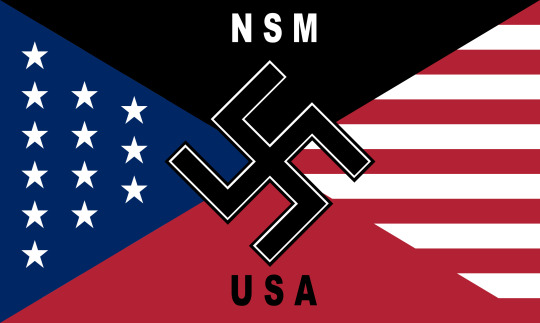
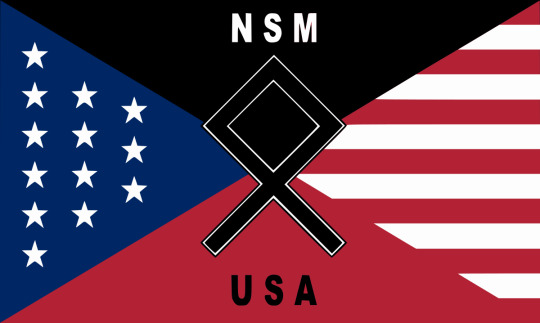

The primary significance of the Othala rune is tied to the concept of ancestral heritage, inheritance, and homeland. It is often associated with the idea of family, ancestry, and the passing down of traditions and property through generations.
In Scandinavian culture, "odal" signifies inheritance laws that granted land rights to families who had owned a particular piece of land for generations. These laws prohibited the sale of such lands to outsiders, safeguarding the inheritance rights of daughters within the family. Norwegian property laws continue to hold significance in modern times, including the Åsetesrett (homestead right) and the Odelsrett (allodial right). These laws grant individuals the right to complete ownership, free from any external authority, such as landlords, feudal sovereigns, or government interference. A similar tradition known as Udal law can be found in Shetland and Orkney in Scotland, as well as in Manx law on the Isle of Man, all originating from the same source.
Othala, along with other historical symbols in Europe or Asia like the swastika and Celtic cross, has faced misuse and appropriation by far-right groups such as the Nazi party, NSM (National Socialist Movement) and neo-Nazis. Despite this troubling association, the rune still retains its importance in non-racist settings, finding use in Heathenry and even making appearances in popular culture, like J.R.R. Tolkien's works.
The National Socialist Movement (NSM) is a party that asserts itself as the largest and most active in the United States. It is categorized as a hate group by the Southern Poverty Law Center.
Established back in 1974 by Robert Brannon and Cliff Herrington (the former co-chairman of NSM), the party gained notoriety for leading the demonstration that triggered the 2005 Toledo riot. The party's present leader is Burt Colucci, who faced legal trouble in 2021 when he was arrested in Chandler, Arizona, for allegedly threatening a person/people of colour with a handgun during an argument. Here's an article by The Arizona Republic about it.
Anti-Defamation League article on NSM Legacy Logos and the changes.
𖤣𖥧˚ Algiz/Elhaz/Elhiz/Eolh
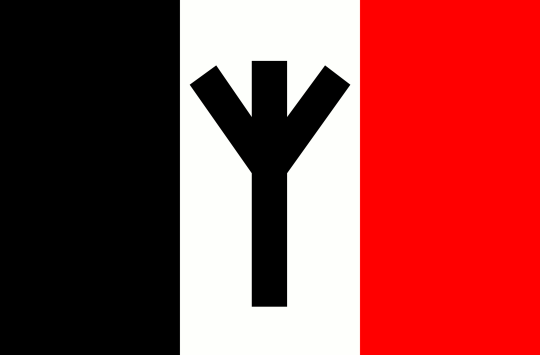

The primary meaning associated with the Elder Futhark rune, Algiz is protection and defense. The rune is often interpreted as representing a shield, warding off threats and danger, whether it be physical or spiritual.
Algiz is also associated with the elk or elk's antlers, symbolizing the majestic and powerful qualities of this animal. The elk was considered sacred in some ancient Germanic and Norse cultures, and its antlers were seen as a representation of higher spiritual connection and vitality, health, and luck. The name Elhaz does mean "elk" in early Europe, it represents hunting, stags, honour and nobility.
In runic inscriptions, Algiz is found on various artifacts, including weapons, amulets, tombstones, and personal items. The inverted meaning of Algiz stands for Yew, death, and funerals.
The Algiz rune has been appropriated by Neo-Nazis to represent the "life rune" or what they call the "life force of the nation." Unfortunately, this symbol has become widely associated with far-right extremists, including Nazis, Neo-Nazis, and racists.
Volksfront, founded by Randal Lee Krager and Richard Arden on October 20th, 1994, originated during their time in an Oregon state prison. This group identified itself as an "international fraternal organization for persons of European descent." However, it garnered notoriety for its virulent racism, rebellion, anti-authoritarian stance, and anti-Semitic beliefs. According to the Anti-Defamation League, Volksfront was the most active neo-Nazi group on the U.S. west coast and formed alliances with various other hate groups.
In Guido von List's Armanen Futharkh, we find the "Life Rune" or "Death Rune" (Lebensrune in German) represented by the Man and Yr runes, derived from the Younger Futhark. These runes were later adopted and altered by Karl Maria Wiligut, who played a role in introducing them into Nazi occultism. Notably, both List and Wiligut used the Yr rune, which bears the same shape as the Younger Futhark Yr rune. The Yr rune looks exactly like Algiz, but just inverted. Just keep that in mind.
𖤣𖥧˚ Valknut/Odin's Knot/Hrungnir's Heart/Valknutr


The Valknut is a symbolic knot associated with "Father of the Gods", Odin. The word "Valknut" is derived from modern Norwegian compound word, where "valr/valur" means "slain warriors" or "fallen warriors," and "knut/knútr" means "knot." It is also sometimes referred to as the "Hrungnir's heart" after a giant in Norse mythology, who was known to have a stone heart pointed with three corners. Some interpret the Valknut as a symbol of Odin's power to bind and unbind both mortal and divine matters. The term "Valknut" is relatively still modern.
Historically, the Valknut has been found on various artifacts and objects dating back to the Viking Age (8th to 11th centuries). It appears on rune stones, burial monuments, and other objects found in Norse archaeological sites. The Valknut's presence on these objects suggests its importance in Norse culture, particularly in relation to themes of death, battle, and the afterlife. There is even an image which depicts the Tängelgårda stone from Gotland, Sweden, features valknuts below a depiction of a man (possibly Odin) on a horse.
White supremacists, specifically those who identify as racist Odinists, have co-opted the Valknot symbol, distorting its meaning for their racist agenda. They commonly employ this symbol as a declaration of their unwavering loyalty to Odin, often associating it with a willingness to sacrifice their lives in battle. It is a common symbol that you'll see being used by white supremacists.
The symbol is not exclusive to racist "pagans"; its usage extends beyond that. To truly understand its meaning, it's crucial to examine the context rather than making assumptions based on a specific instance.
𖤣𖥧˚ Tiwaz/Teiwaz
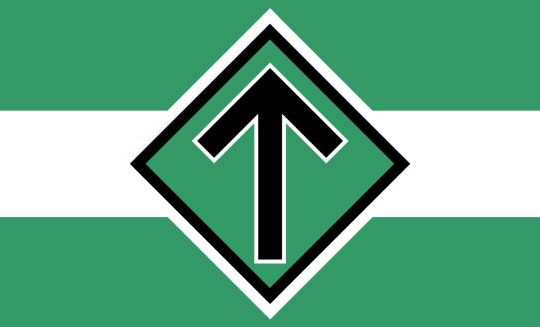

Tiwaz, also known as Tyr, is an ancient runic symbol that represents the god Tyr in Norse mythology. The name "Tiwaz" comes from the reconstructed Proto-Germanic word *Tīwaz, which is related to the Old Norse/Germanic god Tyr. The runic symbol for Tiwaz looks like an arrow pointing upward, resembling an arrow or spear.
Tiwaz is associated with the god Tyr, who is considered the god of war, law, and justice in Norse mythology. He was one of the principal gods in the Norse pantheon and was known for his bravery and sense of duty. The Tiwaz rune was often used to invoke the qualities of Tyr, such as courage, honour, self-sacrifice, and the pursuit of justice. It was believed that wearing or inscribing this rune could grant protection in battle and help bring about victory.
In Nazi Germany, the Tyr rune held significant symbolism and was adopted by various Nazi organizations, such as the leadership schools of the Sturmabteilung and a Waffen SS infantry division. Unfortunately, after World War II, the Tyr rune continued to be misused by neo-Nazis and white supremacists. Together with the Elhaz (or Life) rune, it became one of the most frequently appropriated ancient runic symbols by these groups. The Tyr rune's appeal lies in its association with the idea of a "warrior rune."
"Because today the Tyr rune continues to be used by non-racists as well, including members of various neo-pagan religions, one should not assume that use of the symbol is racist but instead should judge the symbol carefully in its specific context." — Anti-Defamation League
In 1997, Swedish far-right activists, including Klas Lund, founded the organization under the name "Swedish Resistance Movement." The group later expanded its influence to other Nordic countries, leading to the current name, the Nordic Resistance Movement. Emerging as an offshoot of the Swedish White Aryan Resistance, the group aimed to consolidate nationalist forces under a single banner in the Nordic countries. Inspired by similar far-right movements worldwide, the NRM soon expanded its influence beyond Sweden, reaching Denmark, Norway, Iceland, and Finland. However, it was banned in Finland back in 2019. Respected terrorism expert, Magnus Ranstorp, has labeled the NRM as a terrorist group due to its alarming aims of undermining democracy, engaging in paramilitary activities, and being associated with weapons caches.
The Nordic Resistance Movement is infamous for its aggressive and violent approach to achieving its goals. The group promotes a white supremacist ideology, advocating for the preservation of the Nordic race and the expulsion of non-Nordic immigrants. Their rhetoric also includes anti-Semitic and anti-democratic themes, calling for the establishment of a totalitarian state that mirrors their extremist beliefs.
𖤣𖥧˚ Mjölnir


In Norse mythology, Mjölnir (also known as Mjǫllnir in Old Norse) stands as the formidable hammer wielded by Thor/Þórr, the thunder and lightning deity. Forged by the skilled dwarven brothers, Brokk/Brokkr and Eitri (Sindri), this hammer served as a crucial tool in protecting Asgard from the relentless attacks of giants (jötunns/jotuns) and safeguarding the Aesir.
In Old Norse, the term "Mjölnir" translates to "Crusher." Another connection to Old Norse would be the Icelandic term "mjǫll," which referred to "fresh" or "powdery snow." In modern Icelandic, "mjalli" conveys the meaning of "white," symbolizing lightning's purity and radiance. Thus, Mjölnir can be interpreted as the "shining lightning weapon." Some scholars also propose connections to the Old Norse term "mala" and the Gothic term "malwjan," both implying "to grind."
Additionally, in Russian, the term "molnija" once referred to as "lightning," potentially borrowed from Slavic roots or sharing a common source.
Mjölnir served as a symbol of fertility, and a means of protection. It wasn’t only a weapon, but a tool to grant blessings on significant occasions, such as weddings, funerals and births. This is why you’d hear about the Norse people wearing hammer amulets in archeological findings. These amulets are believed to have predated when Christianity and the Norse were at odds.
People will wear a Mjölnir amulet or have Norse-related items because they believe that they share a connection to Scandinavia, whether it be in blood or through interest. Mjölnir can also signify you are Norse Pagan, but again, it doesn't always mean that for everyone, especially those who aren't Norse Pagan.
However, in recent times, Mjölnir has been appropriated by the alt-right to insinuate the weapon is a way to attack Jewish people or something, along with their attempts to evoke a perceived sense of cultural identity and heritage. White supremacists have even gone to the extent of getting Mjölnir tattoos with hidden swastikas or wearing them as an amulet.
It's important to note that the use of Mjölnir by the alt-right is controversial and not representative of the broader Norse mythology community or modern followers of Norse paganism, who generally focus on the historical and cultural aspects of these symbols rather than promoting extremist ideologies.
In popular culture, Mjölnir is also commonly associated with the Marvel Comics and Marvel Cinematic Universe (MCU) version of Thor. In these adaptations, Thor's hammer has become a widely recognized symbol, representing strength, power, and heroism.
𖤣𖥧˚ Black Sun/Sonnenrad/Sunwheel

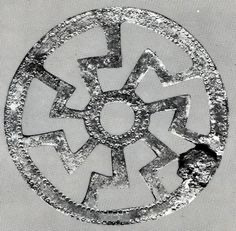

Black sun on the left, and the Merovingian sun wheel on the right.
This is going to be a long explanation for the Black Sun symbol and the history, just a heads up.
Initially mistaken as a Viking symbol, the Sunwheel, also known as the Black Sun or Sonnenrad, is a Nazi symbol—sometimes mistakenly shown having a connection to runes, which even though, has no connection to runes despite some variations showing otherwise. The Black Sun symbol draws inspiration from the Merovingian decorative Sun/Solar wheels, used by the ruling family of the Franks in the mid-5th to 8th centuries CE. Some of these solar wheels even featured having the swastika symbol. Before being appropriated by the Nazis, the right-facing symbol held positive connotations in Hinduism, symbolizing prosperity and good luck.
Despite some similarities, there are distinctions between the Merovingian Sun wheel and the Black Sun symbol often associated with alt-right groups. The term "Black Sun" or "Schwarze Sonne" itself was coined by the Nazis and has no historical connection to the Merovingian disks.
Archaeological evidence reveals that these ornamental disks, known as "Zierscheibe" in German, date back to the European Bronze Age and Iron Age and were worn as metal jewelry. They are found in women’s graves, and were possibly used as pendants or amulets, or to fasten belts or tunics. The Black Sun symbol was later adapted from this artistic style by the Nazis to represent their occult beliefs.
In ancient times, ornamental disks emerged in Western Italic and Peninsula as symbols of the sun, often jewelry of prestigious women during the Late Bronze Age around 800 BCE.
The solar disks might have held significant meaning for the warrior-elites of the Merovingian Dynasty, as well as affluent members of the nobility and clergy, symbolizing both their elevated status and deep-rooted faith.
This artistic style endured into the Iron Age of the Migration Period or Merovingian period. As we move northward into Central Europe, we find more intricate disks, particularly within a Christian context, resembling the Nazi Black Sun in some ways or not being remotely close to it. In the Nazi era, the iconography of these sun disks underwent reinterpretation and modification within Germany’s Nazi occult circles.
Distinctively, the Black Sun symbol features a dark globe in the centre, highlighting its mystic-mythological aspects. In contrast, the ancient Germanic solar wheels did not have a filled centre, as they solely represented the sun.
The number of rays in the Black Sun and Merovingian disks vary, with the the Nazi symbol Black Sun typically having 12 rays, while the Merovingian disks usually had 7 to 9 rays—and very rarely 10. The number 9 has connections to Odinic beliefs in Germanic-Nordic paganism. The number 9 would be associated with deities of death, ecstasy, mysteries of the afterlife and chthonic deities of the underworld and fertility—or earth. And even the number of days Odin was hung in Yggdrasil. However, the association with the number 9 being an Odinic number (not the Merovingian disks) is commonly heard in Scandinavia and in Iceland. It could even be speculated that the rays aren’t necessarily rays of the sun, but rather associated with thunder in a fertility-religious context.
The 12 rays of the Black Sun are linked to Christian esotericism in Nazism, representing 12 aspects of the Judeo-Christian God or the 12 original disciples.
The Nazi-created symbol emerged in 1934, made by SS members of Heinrich Himmler, reinterpreted to align with Christian esotericism and the politics of Nazism. The Wewelsburg castle became a focal point for this symbol's ceremonial use and the dissemination of hidden knowledge among a select few, reflecting the Nazis' desire for global dominance through invasion, colonization, and oppression.
While the Merovingian disks can be traced back to the Frankish territory, where Clovis I was the first king of the Franks and founder of the Merovingian Dynasty, their association with the Black Sun is tenuous at best. One known example of a "Merovingian Sun Wheel" with 12 rays is considered well-known forgery.

General Keywords or Glossary
‧₊˚. : · •. * • ˚ . · * ✶ : · • * ˚ ✵
We'll explore common keywords and phrases often utilized by individuals associated with racism, white supremacy, and the alt-right. These terms may be used for self-identification or to justify harmful actions. However, it's crucial to remember that some words are broad and not everyone using them is a racist. Stay vigilant, assess the context and intentions before making assumptions. Being aware of these terms is important.
Heritage: The term "Heritage" was frequently employed as a euphemism for promoting and preserving what white supremacist/alt-right considered to be traditional white European culture and values. It was often used to express opposition to immigration, multiculturalism, and social changes that they believed threatened their perceived cultural dominance.
Ethnic: The word "ethnic" might be used in a way that emphasizes and promotes a sense of ethnic identity and nationalism. The alt-right might argue for the preservation of what they perceive as their own ethnic or racial group's cultural and societal dominance.
Aryan: The term "Aryan" originally referred to a group of Indo-Iranian peoples who migrated into the Indian subcontinent during ancient times. In the late 19th and early 20th centuries, it was misappropriated by European racial theorists and white supremacists who propagated the notion of a supposed "Aryan race" as the purest and superior race. This concept was based on pseudoscientific and racist ideologies that aimed to justify colonialism, racial segregation, and discrimination.
Ethno-nationalism: is used by some factions of the alt-right, it might involve advocating for policies that prioritize the interests of a specific ethnic or racial group over others. This can include opposition to immigration and multiculturalism, as well as an emphasis on preserving what they perceive to be their own cultural or racial identity.
Nationalist: Some individuals within the alt-right movement might use the term "Nationalist" as a way to emphasize their love and pride for their country (patriotism) but with a more extreme, exclusive, and often ethno-centric approach. This can lead to a form of nationalism that prioritizes the interests of the nation's dominant ethnic or cultural group while marginalizing or excluding others.
Ethno-centric: The word "ethno-centric" is a term used to describe a worldview or belief system that places a particular ethnic group at the center of social, cultural, and political importance. Ethno-centrism often involves the belief that one's own ethnic group is superior to others, and it can lead to the marginalization or discrimination of other ethnic or racial groups.
White Power: The phrase “White Power” is a rallying cry or slogan to mock and essentially mimic the “Black Power” slogan often used by African-Americans in the 1960s/70s. It was made to promote their racist beliefs and agenda.
White Genocide: "White Genocide" is a term created by white supremacists to spread propaganda about the supposed decline of the white race. They believe that increasing non-white populations and "forced assimilation," orchestrated by a Jewish conspiracy, are to blame. Some advocate extreme, even violent, actions, claiming that failure to act will lead to the extinction of the white race.
White Nationalism: The term "White Nationalism" was initially coined by white supremacists as a euphemism for their ideology of white supremacy. Over time, some factions sought to differentiate it by defining it as a concept that emphasizes creating countries or regions based on white racial identity, advocating for the exclusive interests of whites while often disregarding other diverse backgrounds.
White Pride: The slogan “White Pride” is linked to promoting white supremacist ideologies. The slogan is seen by many as a response or counter to the broader concept of “Black Pride” or “Pride” movements that focus on empowering marginalized groups and celebrating their cultural heritage and identity. White supremacist may employ this slogan, or something similar, to disassociate themselves from racism, asserting it as a form of "White Pride."
Alt-Right: The "Alt-Right" or "Alternative Right" in politics differs from traditional conservatism as it promotes white nationalism, nativism, and strict anti-immigration policies. It opposes multiculturalism and seeks to revive perceived traditional cultural values. This faction gained traction through online platforms like forums and social media, attracting a significant following.
Extreme-Right: Some individuals or groups within the alt-right might refer to themselves as part of the "Extreme-Right" to emphasize their radical beliefs and distance themselves from more mainstream conservative positions.
Far-Right: The label "far-right" is occasionally employed to encompass some aspects of mainstream conservatism, but it lacks the precision of terms like "extreme right" or "radical right." As a result, many individuals opt for more specific labels to avoid ambiguity.
Neo-Nazis: Neo-Nazis are a prominent faction in the global white supremacist movement. They idolize Hitler and the Nazi era, incorporating its symbols and myths into their own contexts. Many mainly adopt the aesthetics of the mythology of the Third Reich.
Racist Skinheads: The Skinhead subculture began in the UK in the 1960s and later spread globally. Initially a working-class youth movement interested in music and fashion, it diversified over time. However, in the United States, a far-right extremist faction called "Racist Skinheads" emerged. They sport a distinct style, featuring shaved heads, combat boots, tattoos, symbols, rituals, and their own music.
Radical-Right: The term "Radical-Right" is often embraced by certain factions within the alt-right who embrace far-right ideologies, such as white nationalism, nativism, anti-immigration sentiments, and opposition to multiculturalism.
Asatru: Asatru is a modern pagan religious movement that seeks to reconstruct and practice the religious beliefs of the ancient Germanic and Norse people. It emphasizes a connection to the gods and goddesses of the Norse pantheon, such as Odin, Thor, Freyja, and others. Asatru is NOT, within itself, a racist religion, although some white supremacists consider themselves as Asatruists.
9 notes
·
View notes
Text
hades explaining that he’s the god of the dead, not the god of death

390K notes
·
View notes
Text
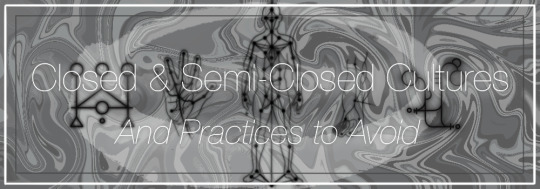
These lists are by no means authoritative or complete. I am a practitioner of only one closed culture and therefore cannot rightfully speak for them all.
Just because a culture is closed or semi-closed does not mean its bad to research them. DO THE RESEARCH. Talk to practitioners of these traditions and cultures. Outside of Mexica traditions, I am not their voice. This post is to act as a guide. A good place to start. And I am 100% open to new information. Think of this post as a collaborative effort.
I have yet to see a more comprehensive list on the internet. So many practices exist that it would be impossible to include them all by name or even know about them all. If there is a practice that you know about, please reblog and share!
Semi-Closed Cultures
These are cultures & practices that require a cultural context that can only be achieved through studiousness and direct interactions with the community. However, these cultures are open to anyone who wishes to join them. They may or may not require an initiation process and other requirements before someone is accepted. Some are based on regionality. The sects mentioned in this list are just one part of the pie. Whatever sects that aren't semi-closed are closed. It is nearly impossible to list all of the sects of these religious and spiritual practices.
Islam (Most sects)
Christianity
Judaism (Most sects)
Hinduism (Most sects)
Buddhism (Most sects)
Zoroastrianism
Sikhism
Confucianism
Yoga
"Shamanism" (A few sects)
Kabbalah (Rigorous initiation)
Native American Cultures (A couple tribes)
Ozark & Appalachian folk traditions
Slavic folk practices
Closed Cultures
These are cultures that heavily guard their spiritual and/or mystical practices. Some do perform initiation, however they will not accept just anyone. Some of these are deep rooted ethnic practices and require the same ethnic background in order to be initiated. Due to the closed nature of these magical practices, it is next to impossible to find any reliable information on the internet. Which means using these practices outside of their cultural context will be: ineffective, disrespectful, and misinformed.
Hinduism (Some sects)
Islam (Some sects)
Judaism (Some sects)
Buddhism (Some sects)
"Shamanism" (Most practices)
Navajo
Zuni
Lakota
Ho-Chunk
Mapuche
Cherokee
Chilote
Anishinaabe
Pawnee
Most other Native American cultures
Taoist mysticism
Korean folk practices
Chinese folk practices (Almost all sects)
African Traditions (Nearly all sects)
Root Work (Commonly referred to has Hoodoo)
Rootwork
Santeria
Espiritismo
Kele
Obeah
Winti
Myal
Abakua
Kumina
Yoruba traditions
Mexica traditions (Commonly referred to as Aztec)
Toltec traditions
Maya traditions
Indiginous Australian practices
Maori practices
Tagalog practices
Tengriism
Druidism
Romani practices
Shinto practices
Manchu practices
Mongolian practices
Satsana Phi
Ban Phi
Vietnamese practices
Sami practices
Mari practices
Open Cultures
These are typically considered dead cultures, which means that there are very few surviving cultural centers to gain cultural context. Most of the practices are obtained through archeology and should be considered incomplete. However, taking part in these practices is not considered disrespectful if it is practiced responsibly.
Hermeticism
Hellenism
Kemeticism (And other ancient Egyptian practices)
Norse practices (General Heathenry)
Etruscan practices
Sumerian practices
Practices to avoid
These practices are appropriative, rooted in racism/misogyny, cult-like, and/or directly lead into fascism. They should be avoided at all costs. Many of these practices are wide-spread. Several claim to have ancient origin, when they do not. Most of them have taken practices from other cultures and obscured them and claimed them as their own. Some of these practices are literal pyramid schemes.
Wicca
Claims ancient origin, appropriative, misogynistic, consumerism
Neo-Wiccan practices
Same as Wicca, but also tends to be transphobic and racist, consumerism
Ceremonial Magick
Appropriative, rooted in racism & misogyny.
Thelema
Appropriative, rooted in racism & misogyny, cult-like
New Age practices (Like Reiki)
Appropriative, Alt-right (fascist) pipeline, cult-like, pyramid scheme, consumerism
Neo-Shamanism (Nearly all sects)
Appropriative, claims ancient origin
Neo-Nordic practices
Fascist, Appropriative, claims ancient purity
Neo-Druidry
Appropriative, claims ancient origin
Eco-Pagan practices
Appropriative, claims ancient origin, transphobic, consumerism
Hermetic Qabalah
Appropriative, rooted in racism & misogyny
Evangelical practices
Cult-like, fascist, xenophobic, claims ancient origin
Germanic Neopaganism
Fascist pipeline, Appropriative, claims ancient purity
Theosophical practices
Rooted in colonialism, appropriative, claims ancient origin, rooted in white supremacy, misinformative.
If you'd like to know more about me and my blog, ask a question, suggest content, see a list of my posted/planned informational content, or commission a sigil, click here.
UPDATED LISTS
258 notes
·
View notes